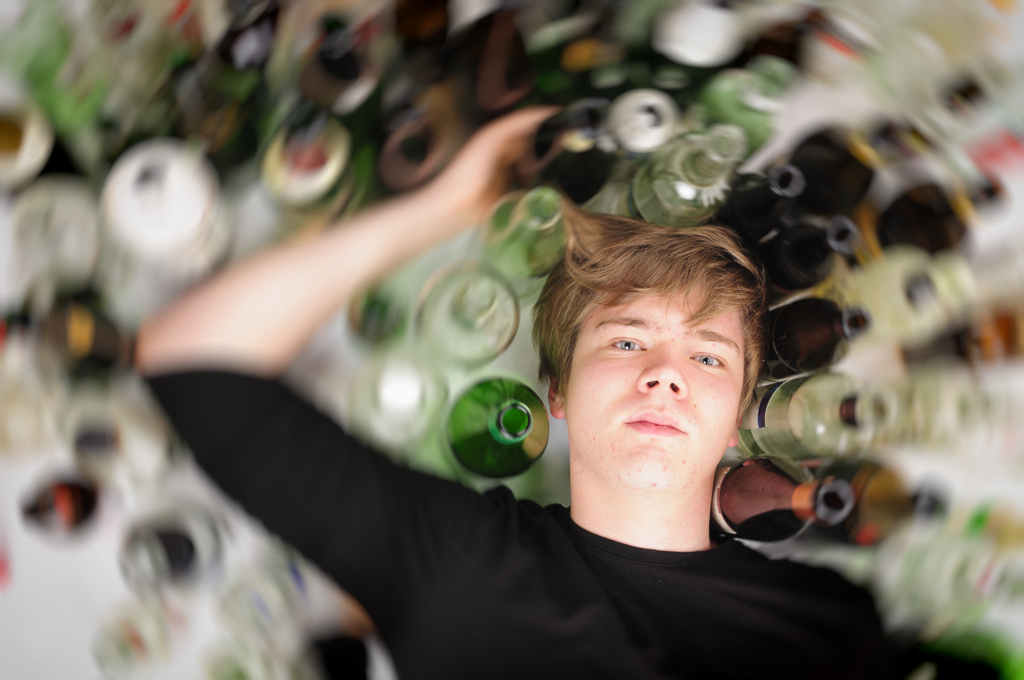College is a wonderful time of learning and self-discovery, but binge drinking and not drinking responsibility can ruin this experience or even endanger a student’s life.
While plenty of people choose not to drink in college, roughly 3 out of 5 students do, according to the National Institute of Alcohol Abuse and Alcoholism. [1] The NIAAA has found that – on the average – 39 percent of students between the ages of 18 and 22 reported engaging in binge drinking (5 or more drinks on one occasion) in a month. [2]
About 1 in 4 college students report academic consequences from drinking, including missing class, falling behind in class, doing poorly on exams or papers, and receiving lower grades overall. [3]

Alcohol Measurement Definitions
- Alcohol by Volume (ABV) – Represents the volume of liquid that is ethanol compared to the entire volume of the drink.
- Alcohol by Weight (ABW) – Represents the weight of the liquid that is ethanol compared to the entire weight of the drink.
- Employees who complete alcohol seller-server training are able to prevent sales to minors, recognize signs of intoxication, reduce liability, and effectively intervene in problem situations.
- State-Approved Training
- 100% online - No Classroom Attendance
- Download Certificate Upon Completion
Alcohol Definitions
- Ale or Malt Liquor – A malt beverage containing more than four percent of alcohol by
weight. (Generally 5.1% or more ABV.) - Beer – A malt beverage containing one-half of one percent or more of alcohol by volume
and not more than four percent of alcohol by weight, and does not include a beverage
designated by label or otherwise by a name other than beer. (Generally 5.1% and under
ABV.) - Distilled Spirits – Alcohol, spirits of wine, whiskey, rum, brandy, gin, or any liquor produced
in whole or in part by the process of distillation, including all dilutions or mixtures of
them, and includes spirit coolers that may have an alcoholic content as low as four percent alcohol by volume and contain plain, sparkling, or carbonated water and may also contain one or more natural or artificial blending or flavoring ingredients. - Wine – A product obtained from the alcoholic fermentation of juice of sound ripe grapes,
fruits, berries, or honey, and includes wine coolers. - Standard Drink – Standard drink charts are helpful, however they may not reflect customary serving sizes.
What counts as a standard alcoholic drink?
Many people are surprised to learn what counts as a drink. In the United States, a “standard” drink is any drink that contains about 0.6 fluid ounces or 14 grams of “pure” alcohol. Although the drinks pictured here are different sizes, each contains approximately the same amount of alcohol and counts as a single standard drink.
Consequences of Irresponsible Drinking
Young college students who drink alcohol y are more likely to experience:
- School problems, such as higher absence and poor or failing grades.
- Social problems, such as fighting and lack of participation in youth activities.
- Legal problems, such as arrest for driving or physically hurting someone while drunk.
- Physical problems, such as hangovers or illnesses.
- Unwanted, unplanned, and unprotected sexual activity.
- Disruption of normal growth and sexual development.
- Physical and sexual assault.
- Higher risk for suicide and homicide.
- Alcohol-related car crashes and other unintentional injuries, such as burns, falls, and drowning.
- Memory problems.
- Abuse of other drugs.
- Changes in brain development that may have life-long effects.
- Death from alcohol poisoning.
In general, the risk of students experiencing these problems is greater for those who binge drink than for those who do not binge drink.

Additional College Alcohol Abuse Resources
A college campus most likely has a counseling center with resources for addressing alcoholism, and there are local Alcoholics Anonymous chapters in virtually every city, not to mention options for support from mental health professionals or rehabilitation centers.
- College Drinking: Changing the Culture is a central location for information related to alcohol use by college students. Resources on this site include:
- Alcohol Policy Information System provides detailed information on alcohol-related policies in the United States at both state and federal levels. Detailed state-by-state information is available for more than 30 policies.
- Safer Campuses and Communities website is based on an NIAAA-funded study that examined a variety of environmental-level strategies that could be implemented on campuses and in their surrounding communities. A free toolkit for implementing the collaborative model is available online.
References
- National Institute on Alcohol Abuse and Alcoholism (NIAAA)
- National Institute on Alcohol Abuse and Alcoholism – College Drinking (PDF)
https://pubs.niaaa.nih.gov/publications/CollegeFactSheet/CollegeFactSheet.pdf - Wechsler, H.; Dowdall, G.W.; Maenner, G.; et al. Changes in binge drinking and related problems among American college students between 1993 and 1997: Results of the Harvard School of Public Health College Alcohol Study. Journal of American College Health 47(2):57– 68, 1998. PMID: 9782661 http://www. tandfonline.com/doi/pdf/10.1080/07448489809595621


























